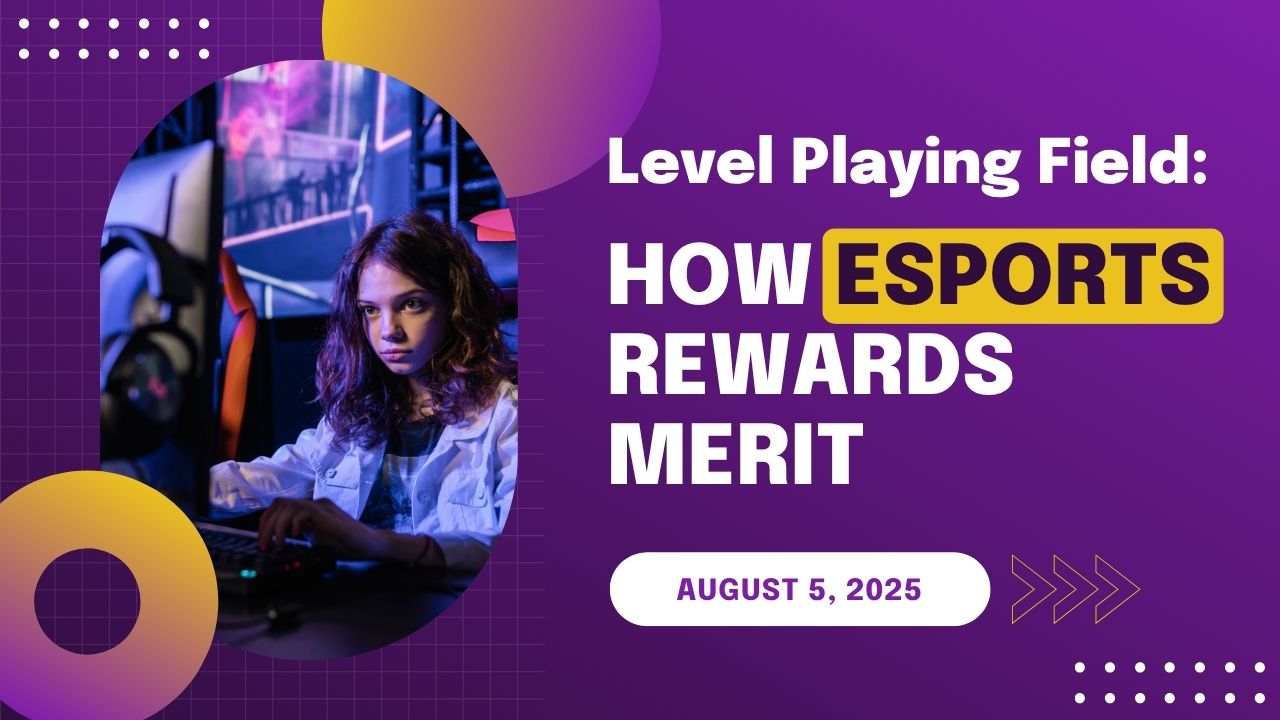I remember my middle school science teacher on the first day of class raising two beakers filled with mysterious ingredients, lowering his goggles to protect his eyes, and then turning slowly to the class to give us an ominous warning.
“Stand back. This could blow.”
Was he serious? Was I in danger? Who cared—if something was going to blow, I was locking in. He had my full attention.
My teacher proceeded to make table salt. Hardly dangerous at all, but his approach was wildly captivating. And even if I didn’t want to pay attention, I still was going to watch. Why?
Because when teachers meet kids where they are, those kids will follow the breadcrumbs from engagement to learning.
Today, that breadcrumb trail is digital. It’s on a screen. It’s dynamic, competitive, and filled with strategy, communication, logic, and quick decision-making. In short—it looks a lot like esports. And if you want students to lean into learning, especially in fields like STEM and computer science, you have to start where they’re already showing up.
So, how does esports enhance student engagement in STEM and computer science? Let’s break it down into four powerful ways.
1. Esports Sparks Curiosity that Leads to Creation
The first step to learning anything is being interested. Esports makes that part easy.
Students love gaming—not just for fun, but for the community, strategy, and competitive challenge. When schools implement academic esports programs aligned with a K12 coding curriculum or game design curriculum, they’re not just validating students’ interests—they’re converting those interests into opportunity.
Once students are immersed in gameplay, they start asking:
- “How was this game made?”
- “How do streamers build overlays?”
- “Can I make something like this?”
These are golden moments for educators. With the right resources, teachers can transition students into hands-on learning involving:
- Game design using Unity
- Introductory programming in Python
- Math applications like hitboxes and probability
- Digital logic through if/then conditionals and algorithmic thinking
What begins as play can evolve into deep engagement with a computer science curriculum, especially when supported with standards-aligned materials.
Esports is the hook. The curriculum is the pathway. And with the right support, students can go from gamer to maker.
2. Esports Builds Technical Literacy Through Hands-On Learning
Academic esports isn’t just about competing—it’s about managing systems and solving real-world problems. That’s why it's such a natural entry point into middle school computer science and coding for high school students.
Behind every esports team is a mini tech crew:
- Students maintain hardware
- Students use broadcasting software like OBS
- Students troubleshoot issues across the tech spectrum

That’s more than just technological savviness; it’s project-based learning with real-world applications. These are the foundational tasks of future IT professionals, software developers, and system administrators.
With a structured K12 computer science curriculum layered into the esports experience—like the one we use at USAEL—teachers can align activities with CTE and computer science for high school pathways. The result? Students gain early exposure to tools and workflows they might otherwise not encounter until college or beyond.
3. Esports Opens the Door to Careers in STEM, Game Design, and AI
For too many students, STEM careers feel distant or abstract. Esports makes them personal.
A single esports program can expose students to a wide range of tech-centric roles:
- Game Developer
- Software Engineer
- Broadcast Technician
- Data Analyst
- Cybersecurity Specialist
- And more
- And more
And increasingly, AI is a part of all of it. AI in K12 is no longer a futuristic concept, it’s a necessity. When students engage in game environments, they can be introduced to:
- How non-player characters are powered by artificial intelligence
- How recommendation algorithms affect player behavior
- How AI education is shaping everything from match predictions to esports coaching tools
By threading AI curriculum into the gaming experience, educators create authentic opportunities to explore the future of tech and help students see themselves in it.

4. Esports Creates an Accessible Entry Point to STEM
Let’s face it: many traditional entry points into STEM don’t work for many students. But esports is different because its ubiquity levels the playing field.
- No need to be athletic or extroverted
- No need for a perfect GPA
- No cost to join if the school provides access
Esports attracts a truly diverse student population—girls, English learners, neurodivergent students, and kids from underserved communities. Many of these students have never joined a robotics team, but they’ll play in a Smash Bros. tournament.
Here’s what that looks like in practice:
- Students who struggle in traditional classrooms can become team captains and discover leaderships skills
- Traditionally reserved and quiet students can find a larger voice through in-game communication and strategic conversations
- Students with limited tech exposure learn to build games, stream content, and code
When you embed STEM, AI education, and computer science for high school learners into this mix, the impact multiplies.
You’re not just teaching content, you’re building confidence, promoting belonging, and creating real momentum for future career exploration. In short, esports makes 21st-century skills feel attainable and exciting for everyone.
Yes, my old science teacher made table salt look like a firework.
Today’s educators need a different spark. Esports can be that spark and when used strategically, it becomes far more than just entertainment. Esports becomes an engagement engine, a tech learning platform, and a pathway to computer science, coding, AI, and beyond.
When we meet students where they are, we give them the confidence and curiosity to go farther than they ever imagined.





